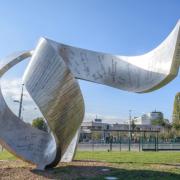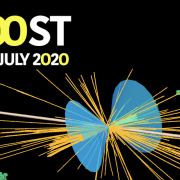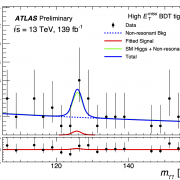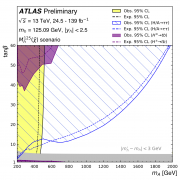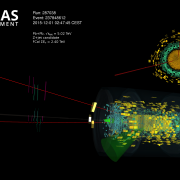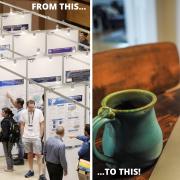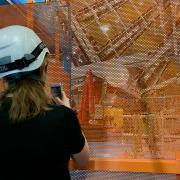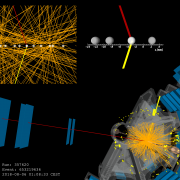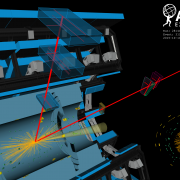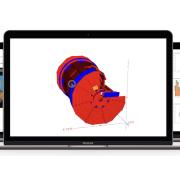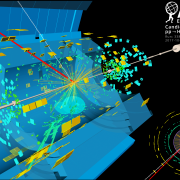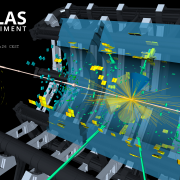Access to Collaboration Site and Physics Results
Updates tagged: “Physics Results”

Jetting into the dark side: a precision search for dark matter
The nature of dark matter remains one of the great unsolved puzzles of fundamental physics. Many theoretical scenarios postulate that dark matter particles could be produced in the intense high-energy proton–proton collisions of the LHC. While the dark matter would escape the ATLAS detector unseen, it could occasionally be accompanied by a visible jet of particles radiated from the interaction point. Today, at the International Conference in High-Energy Physics (ICHEP 2020), ATLAS presented a new search for novel phenomena in collision events with jets and high missing transverse momentum (MET).

Summary of new ATLAS results for ICHEP 2020
Since the 1950s, one conference has stayed circled in red on every physicist's calendar: the International Conference on High-Energy Physics (ICHEP). The fortieth edition of ICHEP kicks off today, bringing together particle physicists, astrophysicists and accelerator scientists to share the latest news in their fields. Originally planned as an in-person event in Prague, ICHEP2020 will instead be the very first all-virtual edition of the conference.
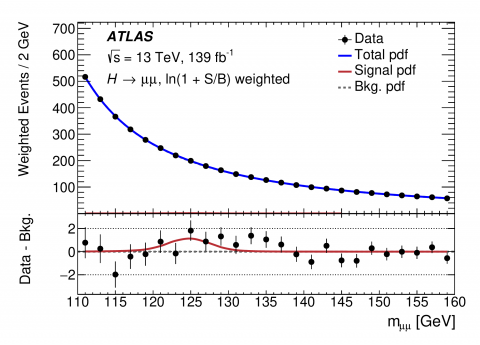
ATLAS one step closer in the search for rare Higgs boson decays to muons
The ATLAS Collaboration has released a new paper on the search for the Higgs-boson decay to a pair of muons. The new study uses the entire dataset collected by the ATLAS experiment during Run 2 of the LHC (2015–2018) to give a first hint of this elusive process.

Summary of ATLAS results presented at BOOST 2020
The first all-virtual BOOST workshop kicks off today, bringing together experts from the LHC experiments and the theory community. This is the twelfth conference on "Boosted Object Phenomenology, Reconstruction and Searches in High-Energy Physics" (BOOST 2020), hosting plenary-style talks and virtual poster presentations on the latest developments in hadronic physics.
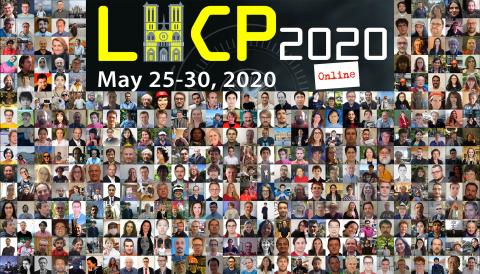
Physicists gather online for the Large Hadron Collider Physics conference
The eighth Large Hadron Collider Physics (LHCP 2020) conference concluded today, 30 May, in Zoom rooms around the world. Instead of descending on Paris to meet, particle physicists held the conference fully online for the first time. As a result, LHCP 2020 welcomed some 1300 registered participants – nearly triple its previous record of attendance. A bumper crop of new ATLAS results were prepared for the conference covering a broad range of topics, from precise measurements of the Standard Model to novel searches for new physics. These new results probed the full dataset collected during Run 2 of the LHC (2015-2018) – a proven gold mine for ATLAS’ rich physics programme.
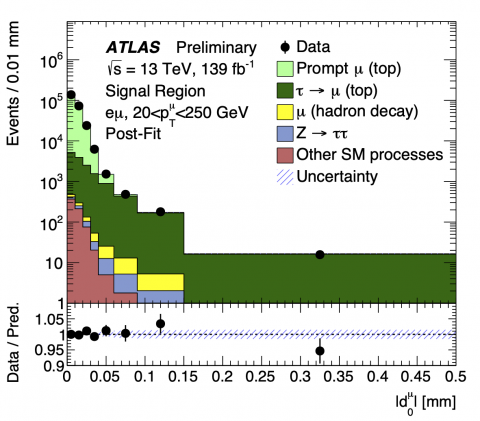
New ATLAS result addresses long-standing tension in the Standard Model
This week, at the LHCP 2020 conference, the ATLAS Collaboration presented a precise measurement of lepton flavour universality using a brand-new technique. Physicists examined collision events where pairs of top quarks decay to pairs of W bosons, and subsequently into leptons. They then measured the relative probability that this lepton is a muon or a tau-lepton – a ratio known as R(τ/μ). According to the Standard Model, R(τ/μ) should be unity – but there has been long-standing tension with this prediction, ever since it was measured at the Large Electron-Positron (LEP) collider in the 1990s.
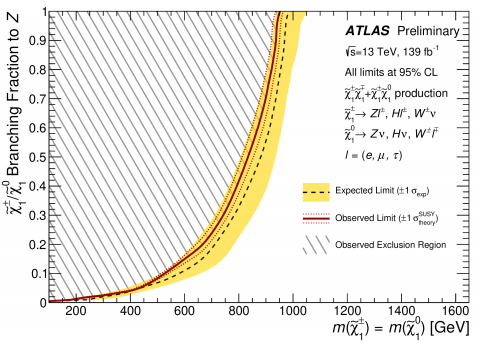
Fantastic decays and where to find them
Supersymmetry offers an elegant solution to the limitations of the Standard Model, extending it to give each elementary particle a “superpartner” with different spin properties. Yet SUSY also contains interactions that would cause phenomena not observed in nature, such as the decay of protons. This has traditionally been avoided by requiring the conservation of a property known as “R-parity” (or “matter-parity”), which incorporates the baryon number, lepton number and spin. ATLAS physicists are also considering SUSY models with R-parity violation (or “RPV”), which would allow the lightest SUSY particle to be observed decaying directly into Standard Model particles.
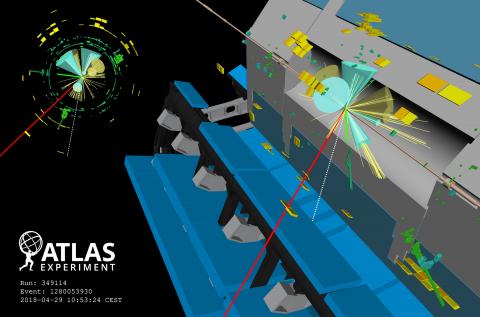
ATLAS finds evidence of spectacular four-top quark production
In a new result released today, the ATLAS Collaboration announced strong evidence of the production of four top quarks. This rare Standard Model process is expected to occur only once for every 70 thousand pairs of top quarks created at the LHC and has proven extremely difficult to measure.
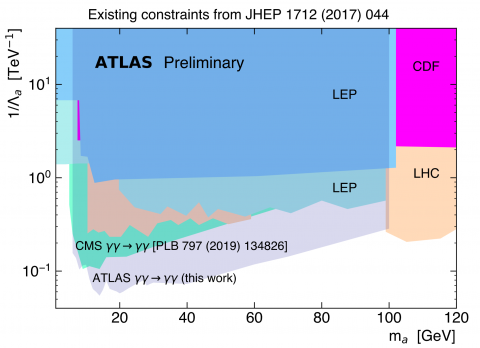
ATLAS measures light scattering on light and constrains axion-like particles
Light-by-light scattering is a very rare phenomenon in which two photons – particles of light – interact, producing another pair of photons. Direct observation of this process at high energy had proven elusive for decades, until it was first seen by the ATLAS Collaboration in 2016 and established in 2019. In a new measurement, ATLAS physicists are using light-by-light scattering to search for a hyped phenomenon beyond the Standard Model of particle physics: axion-like particles.

Probing dark matter with the Higgs boson
Could the Higgs boson decay into dark matter? As dark matter does not interact directly with the ATLAS detector, physicists look for signs of “invisible particles”, inferred through momentum conservation of the proton–proton collision products. The ATLAS Collaboration searched the full LHC Run 2 dataset, setting the strongest limits on the Higgs boson decaying to invisible dark-matter particles to date.


